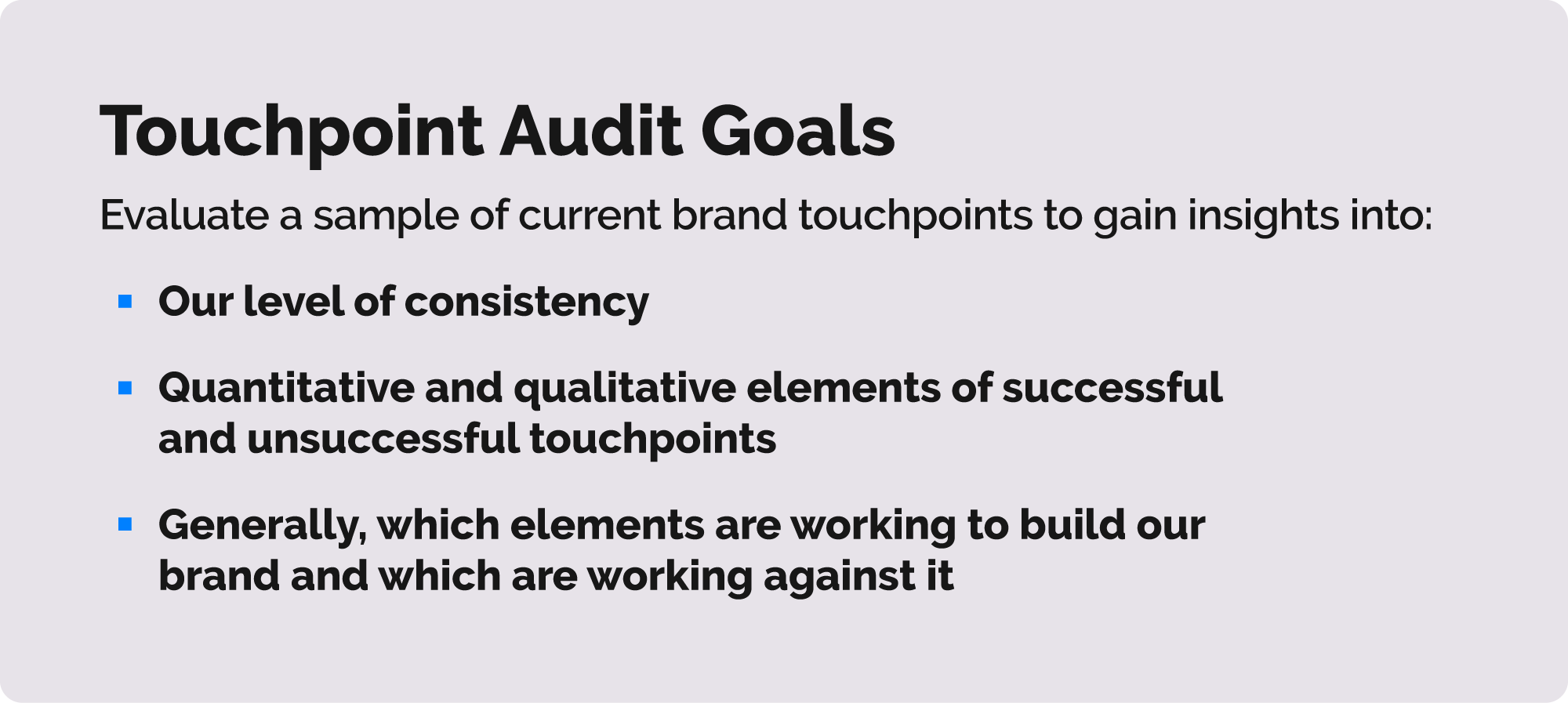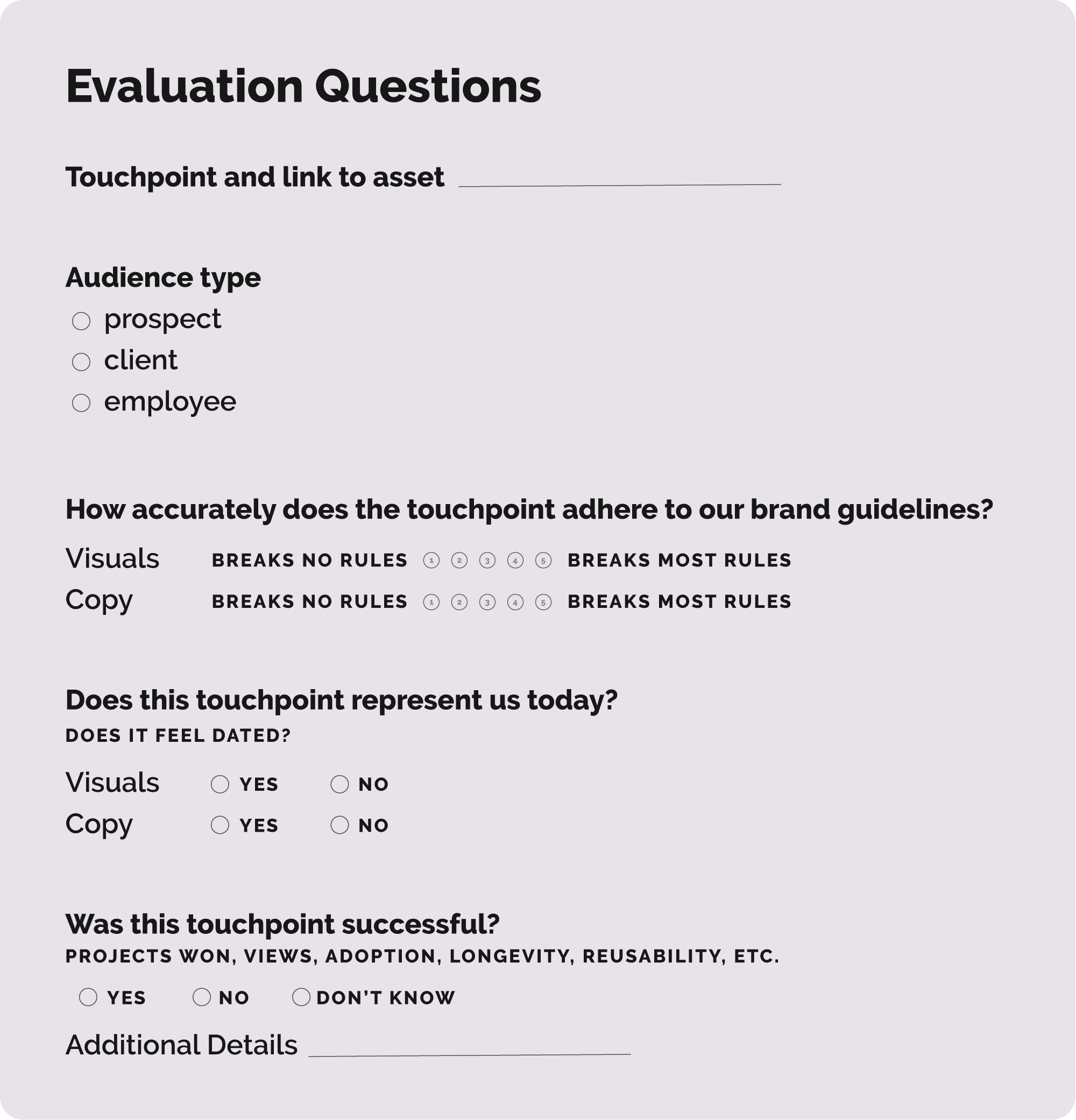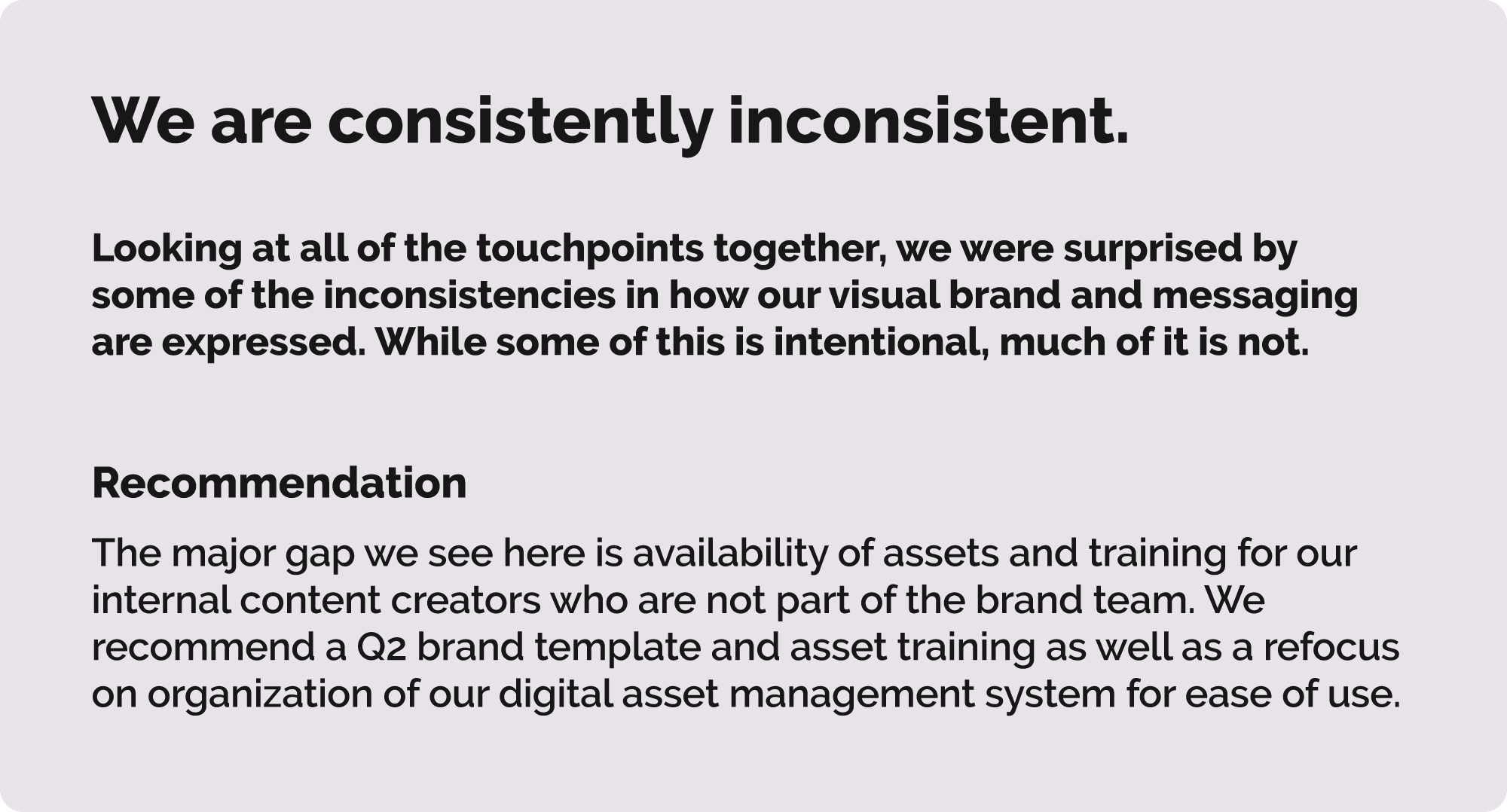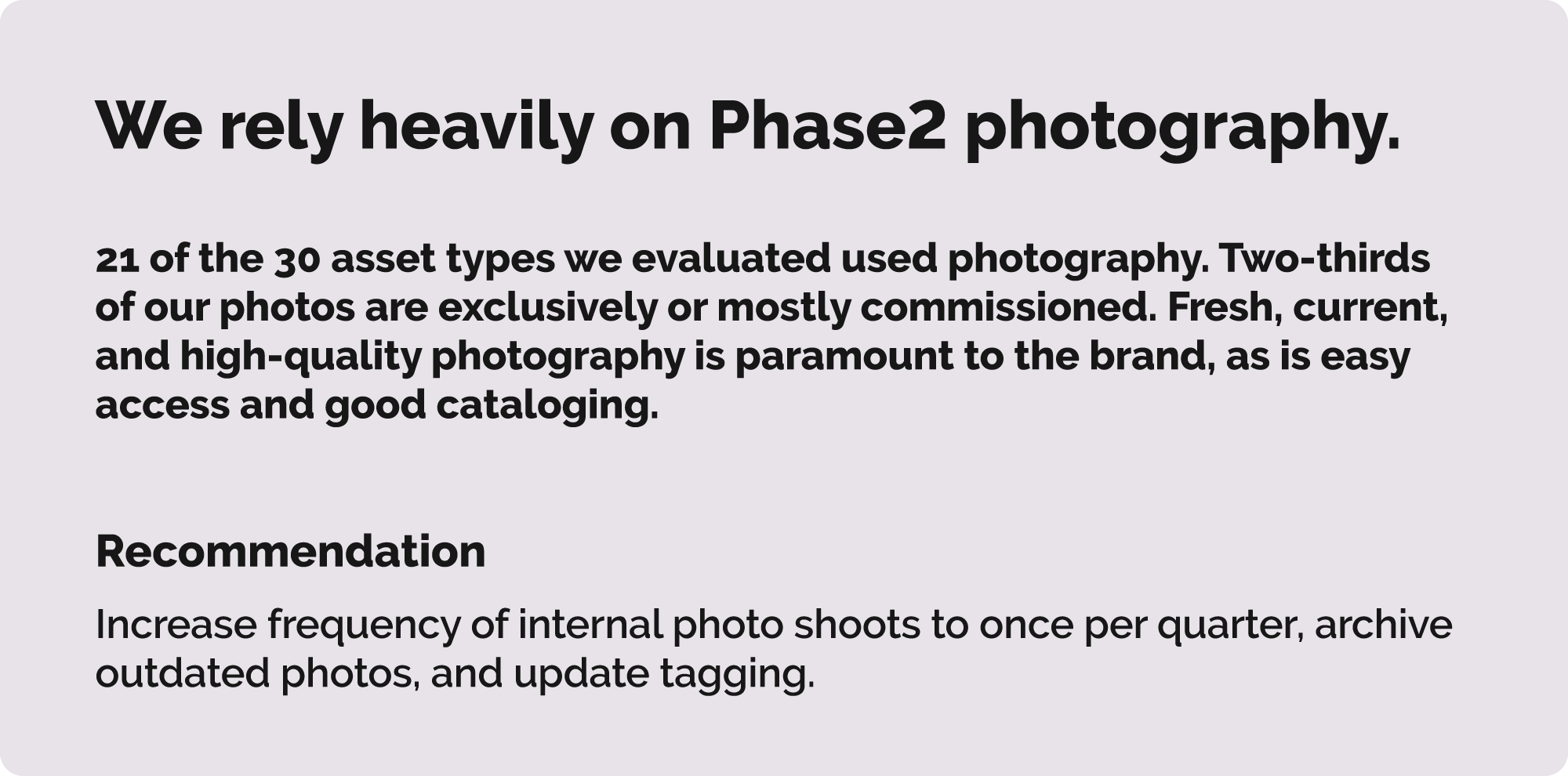Conducting a Brand Touchpoint Audit
Conducting a Brand Touchpoint Audit
Sedona Rigsby | Senior Designer
January 22, 2021
With a new year comes new resolutions and ideas. There’s an air of possibility that can be invigorating and inspiring. As brand creatives, this is the perfect time to assess our brands. It’s important to employ data and strategy — to know, not just feel, what is right. One simple tool can provide direction and answers. A brand touchpoint audit.
A brand touchpoint audit is a process that documents and assesses the current state of a brand, through internally-sourced data, in order to inform its necessary evolution and determine which parts will be integrated or which elements are outdated or outgrown. Audits can be done for a big corporation, or a one-person operation. The data can vary between quantitative and qualitative (acknowledging that it’s a self-evaluated data set). Most importantly, the audit must gather useful data for a brand at a specific moment in time.
Just as we need to periodically check in with ourselves to reflect on past shortcomings and successes, we need to do the same with our brands. A brand is a living entity, and it naturally changes over time. There will always be a natural drift from the original brand guidelines. This drift is caused by the inherent stylistic differences between teams, vendors, and individual creatives. It’s okay, but it’s important to remember it’s not about the team, vendor, or individual - it’s about the brand, its integrity, and the purpose it serves.
If you can’t conduct a full brand audit (taking into account competitor research, external data and validation, and extensive materials review) to achieve an objective view of the brand, a touchpoint audit is essential. Think of it as a self-guided health check rather than an annual doctor’s appointment.
Welcome to Phase2’s step-by-step guide on conducting a brand touchpoint audit (and starting the year off on the right branded foot).
Following The Steps
1. Determine the goals of the audit
Start with why you are doing the brand touchpoint audit. It might simply be to see how teams across the company adhere to brand guidelines. A touchpoint audit can also be an annual exercise that turns into an early indicator for when you might need bigger changes, like a brand refresh. Like tree-rings, an audit tracks a brand’s growth and history. A Phase2 touchpoint audit looks like this:

A good starting goal is: identify what needs to go, what needs to be introduced, and what needs to be enforced.
2. Determine the data needed
In this stage, you are constructing the questions that you will ask yourself for each touchpoint during the audit. The answers to these questions become the data. How will you measure your current touchpoint materials to your goals?
The questions that make up the audit point towards the goals. Try some qualitative and some quantitative. Keep the number of questions to a minimum - you will answer every question for every touchpoint so five is about right. Here are some sample questions:

3. Prepare to audit
Preparing for the audit itself sets the stage. It takes the tedium out of the evaluation step and allows the team to focus on impartial assessment.
There are two parts to the preparation:
- Make the data gathering device
- We’ve used a simple Google Form to construct the questions and submit answers for each touchpoint. The data is then viewable by question or all together, and can be pushed into a spreadsheet. This is an easy process and the results are suitable for at-a-glance use.
- Assemble the touchpoints
- Find every touchpoint and organize them into accessible places for the whole team (suggestion: links in a spreadsheet). Breaking them into categories ensures a good sample.
Consider:
- Aiming for variety in all aspects of the brand:
- Departments (touchpoints produced by Sales, HR, Product, etc.)
- Audience segments (specific verticals, internal, existing client)
- Type (document, presentation, email, social, website, print)
- Visibility; the higher, the better. The whitepaper with hundreds of downloads is more valuable than the internal presentation to a single team.
- Excluding campaigns unless they play a significant role for your goals.
- Recency; don’t evaluate touchpoints that date back further than a year unless there is a specific reason. This audit is intended to be a current snapshot of the brand.
4. Conduct audit
This stage is for impartial evaluation of each touchpoint, so be sure to stay as neutral as possible. Don’t try to analyze or gain consensus instead focus on objective evaluations for every touchpoint.
When inviting colleagues, choose your team strategically. These should be the people who would most benefit from an intimate knowledge of the current state of the brand - they are most likely visioning how the insights turn into necessary changes.
It is recommended that the group stays small (3-4 people) and can commit to the entire touchpoint list. Choose one person as the form-filler and notetaker and another to screenshare the touchpoints. Make sure that everyone is as neutral as possible with the evaluation. The audit is simulating the outside world, not the evaluation team.
5. Synthesize findings
Take the data and gather your 3-4 most important insights into a report that includes findings and recommendations for the future.
The findings will inform the new direction, assert what’s working, and reveal issues to address. Findings can be data-driven, tactical, or more general. This example from a Phase2 audit, addresses the “level of consistency” goal:

While the second insight is more tactical it could t drive creative budget allocation.

Be sure to share this audit report with all the people and teams who will benefit and create an action plan to implement recommendations.
Wellness For Your Brand
If you are responsible for your brand, frequent brand touchpoint audits are crucial. They allow you to make quick assessments and quick changes to make sure you are staying consistent and evolving in a smart, directed way.
When it’s time to conduct a full brand audit, your touchpoint audit findings report, will be an invaluable record for ongoing evolution.
We hope you enjoyed reading the Phase2 blog! Please subscribe below for regular updates and industry insights.

